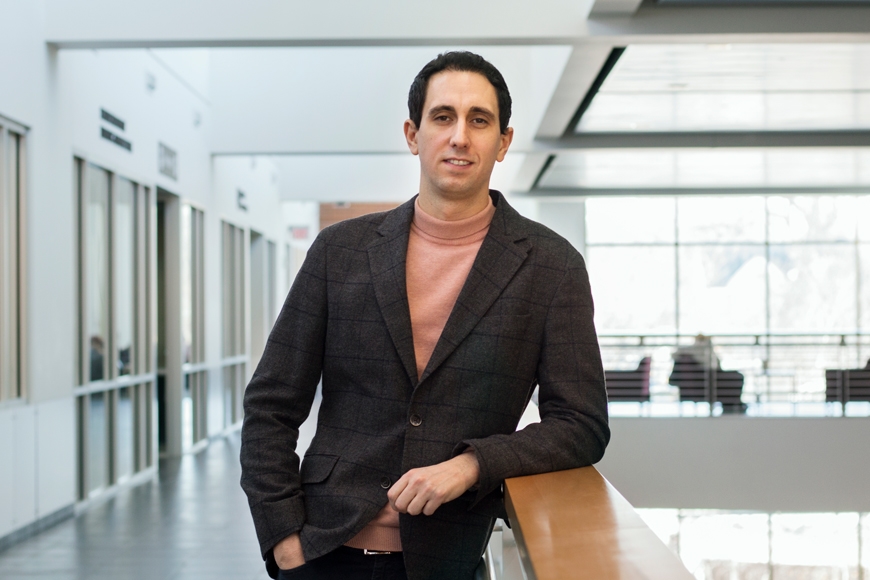A Tale of Two Contracts
After obtaining a bachelor’s degree in economics and business administration, Joaquin Garcia-Cabo was accepted into Centro de Estudios Monetarios y Financieros (CEMFI), a prestigious economics institution in Madrid, Spain. While completing his master’s degree in economics and finance, he met Timothy Kehoe, a professor of economics at the University of Minnesota who was a visiting professor at CEMFI at the time. Professor Kehoe opened Garcia-Cabo’s eyes to the opportunities of pursuing a PhD in the US, and after completing his master’s, Garcia-Cabo found his new home in the University of Minnesota Economics PhD program. Garcia-Cabo wanted to delve deeper into macroeconomics, so he knew Minnesota would be a great match. He said, “Of all the PhD programs I was admitted to, I thought Minnesota was the best. . .and I still believe that.”
International Research at UMN
In the third year of his PhD, Garcia-Cabo, through his studies, observed a pattern in national accounts data for countries with segmented labor markets in terms of employee protection. These types of markets are generally seen in European countries, stemming from robust employment protection legislation. This legislation creates contracts with varying levels of protection. Garcia-Cabo noticed that when employment rises in countries with stringent employment protection legislation, output per employee decreases and vice versa—a puzzling economic phenomenon. After receiving the go-ahead from his advisor, Professor Ellen McGrattan, Garcia-Cabo acquired access to Spanish Social Security data containing information about workers’ labor histories and used that labor market as a case study.
In Spain, Garcia-Cabo’s home country, most workers are protected by one of two types of contracts: fixed-term or permanent. Fixed-term contracts offer very little protection to employees. They can last a maximum of two years, during which an employer can terminate an employee without paying any firing costs. After two years, the employer must decide whether to let the employee go or to offer them a permanent contract.
A permanent contract offers much more protection, requiring that employers pay firing costs if they terminate an employee. Garcia-Cabo describes, “These are firing costs that rise with tenure, so after having an employee for several years at the firm, you may have to pay a year or more of wages to fire them, which is a huge amount.”
Garcia-Cabo set out to understand what type of impact these firing costs are having on human capital accumulation, which refers to the knowledge, skills, and experience gained that make people productive and valuable to an organization, as well as job loss.
Labor Contracts and Individual Outcomes
“I wanted to understand how this segmentation and the level of protection in labor markets affects how workers accumulate human capital, productivity, and their labor market outcomes,” Garcia-Cabo says.
To gain this understanding, he went to the data. “I identify workers with similar labor market outcomes who are dismissed for reasons not related to their performance at the firm, like plant closure or mass dismissals. If they are reemployed after dismissal under a permanent contract, their earnings and wages recover quickly. If they are reemployed under a fixed-term contract, their wages do not fully recover, and they experience recurrent unemployment spells, even though before the dismissal they look similar,” he said.
Specifically, Garcia-Cabo estimates that workers reemployed after dismissal under permanent contracts recover 90% of their earnings losses seven years after dismissal, compared to a control group with similar characteristics who did not lose the job. On the other hand, workers reemployed under fixed-term contracts only recover 60% of their earnings losses seven years after dismissal, compared to the control group. Since Garcia-Cabo can break down wage growth into rising firing costs and increasing human capital, he can conclude that workers reemployed under fixed-term contracts accumulate human capital at a slower rate than workers reemployed under permanent contracts.
To change this narrative, Garcia-Cabo looks at policy analysis that targets increasing the human capital accumulation of workers under fixed-term contracts. Garcia-Cabo assumes workers under fixed-term contracts receive subsidized training to accumulate human capital at the same rate as those reemployed under permanent contracts. When this is the case, the average fixed-term contract worker’s human capital grows at a rate of almost 13% compared to the baseline and the unemployment rate decreases about 1.5%. The benefits are clear from this policy in which human capital accumulation is the same between workers. Further revisions of his paper aim to complete deeper analyses in this area, like proposing a reform of the labor market that reduces unemployment in segmented labor markets as well as increasing aggregate human capital in the economy.
Looking Toward the Future
Fortunately, Garcia-Cabo’s work on this topic will not end when he completes his PhD program this summer. After obtaining his PhD, he will work as an economist at the Federal Reserve Board of Governors in Washington, DC. There, he will be able to devote time to his own research before contributing to the policy work of the Advanced Foreign Economies section within the International Finance division.
While Garcia-Cabo is undoubtedly looking forward to the next steps, leaving is bittersweet. “I’m going to miss my friends who are still in the program. I’m not going to be teaching for now, and that was something I liked,” he said. Garcia-Cabo won the Distinguished Instructor Award for the Department of Economics five times throughout 2014-2017. “On the other hand, I’m going to have a research assistant at the Board of Governors, which will be a mentoring opportunity for me.”
Wherever this next chapter leads, Garcia-Cabo will always cherish his academic journey at the University of Minnesota. “For any economist, Minneapolis is a great environment. The University together with the Federal Reserve Bank of Minneapolis. . .there are few places that would top this,” he says.
This story was written by an undergraduate student in CLA.



